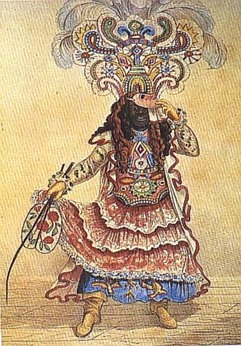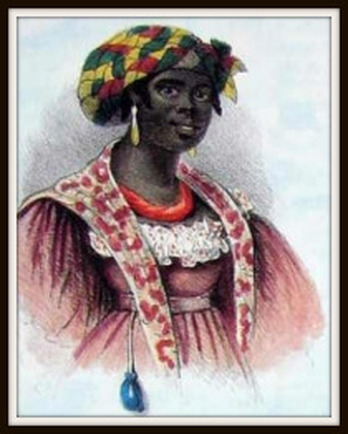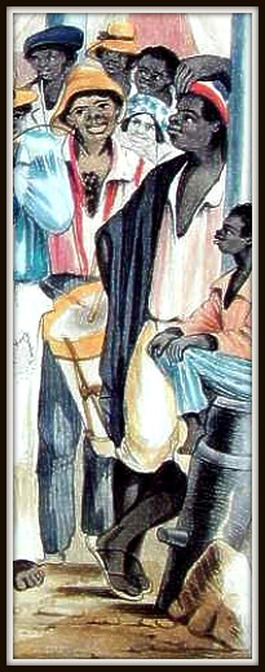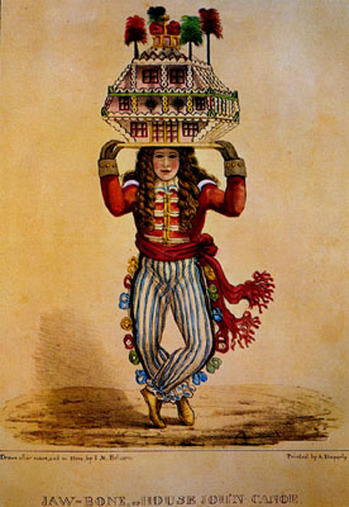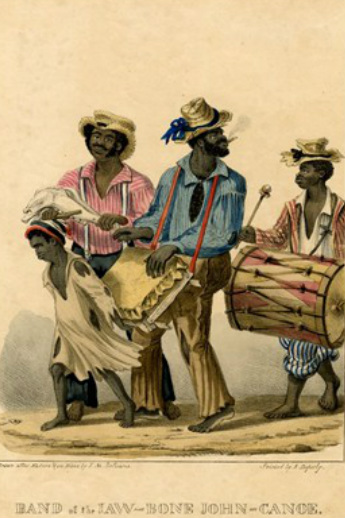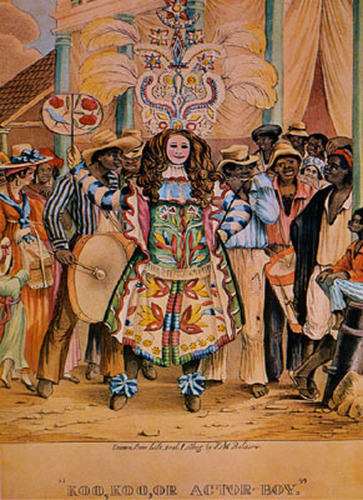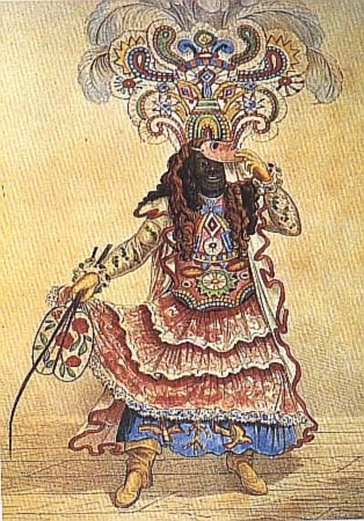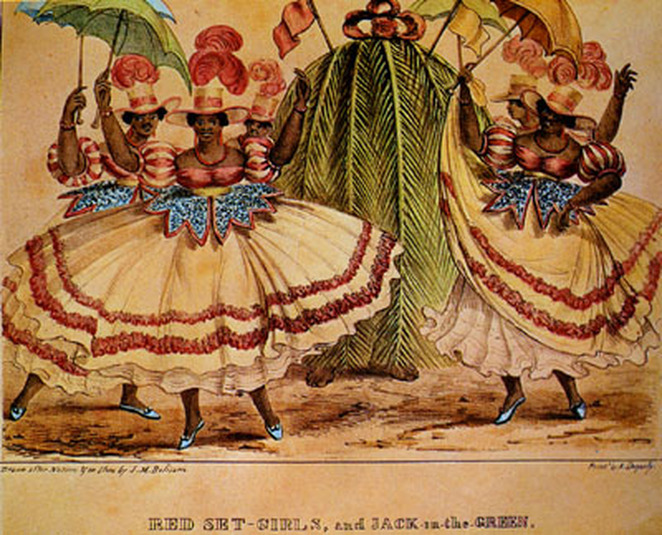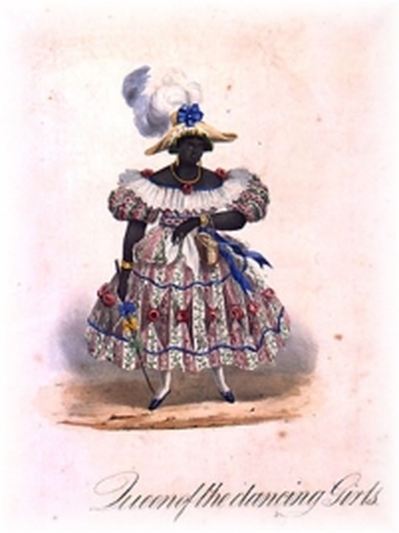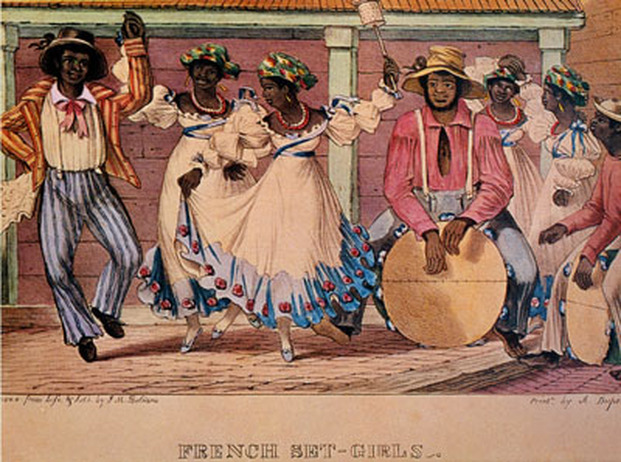Daily Gleaner, December 22, 1900
How Christmas Was Spent One Hundred Years Ago
We have elsewhere described briefly how Christmas is spent now in Jamaica, and we will here glance back at the past, and see how it was spent 100 years ago.
At that time the season was celebrated with more expense and greater festivity than now. Three days holidays were allowed for Christmas and New Year's celebrations, and the principal forms of amusement in vogue were the John Canoe processions, and the dancing of the "set" girls. The finest dresses were reserved for these days, and no expense was spared in displaying the show to the greatest advantage.
"JOHN CANOEING"
This form of amusement was divided into two classes, "Jaw Bone" or "House John Canoe", and the "Koo Koo" or "Actor Boy John Canoe."
How Christmas Was Spent One Hundred Years Ago
We have elsewhere described briefly how Christmas is spent now in Jamaica, and we will here glance back at the past, and see how it was spent 100 years ago.
At that time the season was celebrated with more expense and greater festivity than now. Three days holidays were allowed for Christmas and New Year's celebrations, and the principal forms of amusement in vogue were the John Canoe processions, and the dancing of the "set" girls. The finest dresses were reserved for these days, and no expense was spared in displaying the show to the greatest advantage.
"JOHN CANOEING"
This form of amusement was divided into two classes, "Jaw Bone" or "House John Canoe", and the "Koo Koo" or "Actor Boy John Canoe."
|
The "jaw bone" or "house" John Canoe derived its name partly from one of the principal instruments in the usual band of music, and partly from the fact that a house constructed of pasteboard and coloured paper, profusely ornamented with beads, tinsel, spangles, pieces of looking glass etc., was carried on the head, whilst the dancer went through his wild performances. The instrument referred to was made from the lower jaw of horse, on the teeth of which a piece of wood was rapidly passed up and down giving forth a gruesome rattling noise which can be better imagined than described.
The dancers were usually arranged in a striped doublet — a nondescript compound of half military, half mountebank costume — wearing the usual mask with a profusion of dark hair which fell in large wild ringlets over the shoulders, giving and extraordinary and savage appearance to the wearer which created "wonderment" in the gaping crowd around. The band which formed a most important feature of the procession consisted of three instruments, the 'Gumbay or drum, the jawbone, and the fluter.' Sometimes they would be assisted by a rather discordant chorus of female voices, to the sounds of which the dancer, with his pasteboard house on his head, would go through a strange wild dance to the delight of the enraptured assembly. This dance would be gone through several times and when the musicians got too tired or too drunk or 'When with none of those they meet They danced to the echo of their feet.' as a humorous writer of those times, put it. Those performances were very profitable owing to the generosity of the housekeepers and others who would contribute liberally when the hat was being passed around and the proceeds went in feasting and carousing. |
|
|
THE ACTOR BOY JOHN CANOE
|
The "Koo Koo" or "Actor boy" John Canoe, was of a higher order than the "Jaw Bone John Canoe. In order to be qualified as an "Actor boy" the aspirant had to be able to read in order to commit his parts to memory. For be it known the "Actor Boy" John Canoe was an aspirant to histrionic honors, and some of Shakespeare's plays were the chief items in their limited repertoire. Another feature of this band was the great rivalry for excellence of dress between the members. Their attire was as ludicrous as it was costly, and when the company paraded the streets the gentlemen in the crowd were asked to decode which was the smartest dressed. The majority of votes decided the question and the distinguished individual retired extremely gratified. The jealousy created after this was generally productive of serious broils. A combat would ensue which mostly resulted in the complete destruction of their garments for which they had paid no less a sum than five doubloons — £16. The head dress was the most brilliant part of the get up the foundation of it would be an old hat affording the wearer the means of sustaining the superstructure to which it was firmly attached and composed of various coloured beads, bugles, spangles, pieces of looking glass, etc., attached to a pasteboard form, trimmed round the edges with silver or gold lace surmounted with feathers.
The Actor Boy' would parade the streets with the customary fife and goatskin band and would stop at the principal taverns where he would give a display of his ability to a wondering and admiring audience. "Richard the Third" was a favorite tragedy with them but only selections were given taken here and there from the play without the slightest regard to the order in which the Bard of Avon had arranged his subject. Pizarro was also a favorite piece but whatever the performance was, a combat resulting in death invariably ensued when a ludicrous contrast was produced between the smiling mask and the actions of the dying man. A general call for 'music' was always made at this point and dancing would immediately commence. This would prove too much for the dying man who would at once become resuscitated and join the merry throng. The hat was passed round after this and liberally contributed to by the spectators, the amounts thus collected being spent in a grand banquet on the last night of the holidays. |
THE SET GIRLS
There were two rival factions among these dancers. They were reds and blues. The title was derived from the fact that an Admiral of the Red was once superseded on this station by an Admiral of the Blue, and both of them according to Monk Lewis gave balls at Kingston to the brown girls. In consequence of these balls all Kingston became divided into parties; from thence the division spread into the country and from that time until not too long ago the whole island at Christmas had the red and blue set dancers. The processions were got up with the greatest taste and magnificence. All their dresses corresponded in colour, those of the Queen and 'Maama' differing only in the superior texture of the material used and the display of jewellery was immense. Thus gaily attired they would sally forth at about ten or eleven o'clock in the morning in the following order --
Four Grand masters to protect the set in front. On each side an Adjutant bearing a flag. Then, in the first row would be the hand drum, the leader of the chorus, a tambourine player, a violinist and the 'Queen'. Next to her a triangle beater, a tambourine player, the 'Maam' and a hand drum. Set girls in equal numbers in rear of the Adjutants with the "Commodore" in the centre and Jack in the Green bringing up the rear. In this order they would parade the town, with little intermission till night, when they would be invited to private houses to sing. Refreshments and a gratuity was then presented to them by the families entertained and they retired to repeat the same thing elsewhere. Their songs were for the most part in burlesque of some custom or person and afforded no end of amusements.
The revels of these "Sets" and John Canoes would last the entire three days after which the costumes and other things were laid inside for another festive occasion and the merry makers would resume their unhappy toil. Such in brief was the manner in which the festive season was celebrated 100 years ago.




